|
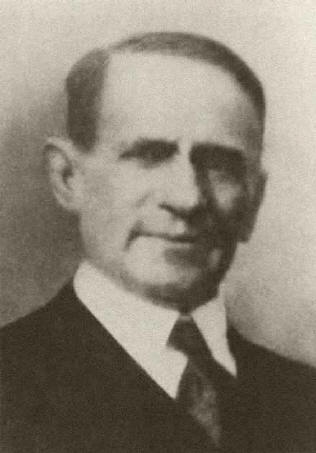

Like many of the early companies dealing in the manufacture and selling of
Christmas lights, The Ever Ready Company was founded by a Jewish immigrant
from Russia. Akiba Horowitz entered into the United States through Ellis
Island in 1891. He was born in Minsk, Russia. A successful businessman in the
distillery trades, he emigrated to the United States when
anti-Semitic policies in Russia became unbearable. Upon his arrival
in America, he changed his name to Conrad Hubert. He was then 35 years of
age.
Unable to establish himself in his
area of expertise, Hubert managed to start a cigar store in New York City.
This was soon followed by many other businesses, including a restaurant,
a jewelry and watch store, a boarding house and a novelty shop. It was
this novelty shop that was to become pivotal in Mr. Hubert's many
contributions to American industry and manufacturing.
The beginnings of Hubert's success
in America were rooted in a now-obscure electrical novelty of the time: the
electric scarf or necktie light. First marketed in America by the Ohio Electric
Works in 1895, the device was a typical necktie pin with the addition of a
tiny light bulb. Unobtrusive wires connected the bulb to a button switch and
battery hidden in the wearer's pocket, and the light was made to flash at
an opportune time by a discreet push of the button.
The pins were available in a
wide variety of shapes and styles: among the most popular were various
faces with glowing red eyes. Other styles included seasonal images such as
skulls and Jack-O-Lanterns for Halloween, pearl and jeweled designs and
Father Christmas and reindeer figures during Yuletide.
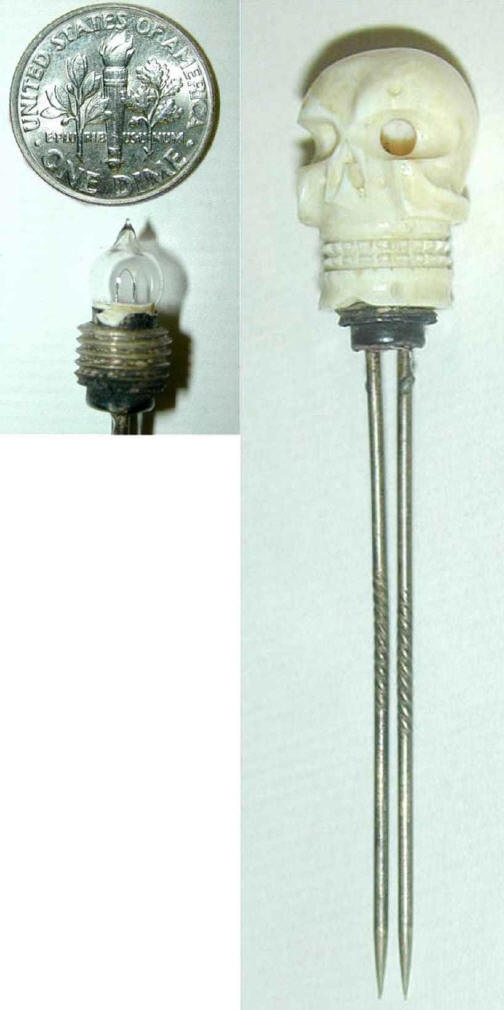 |
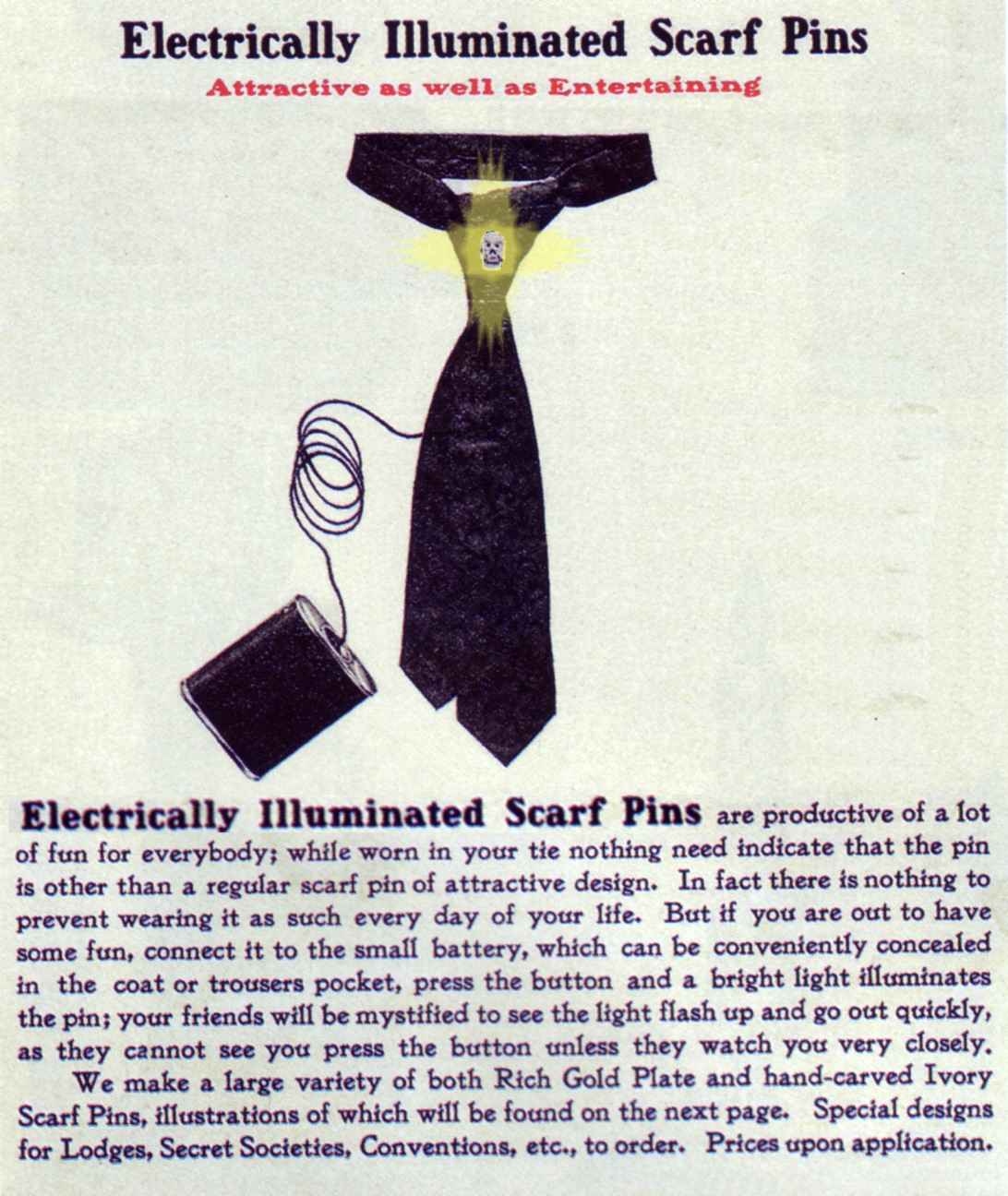 |
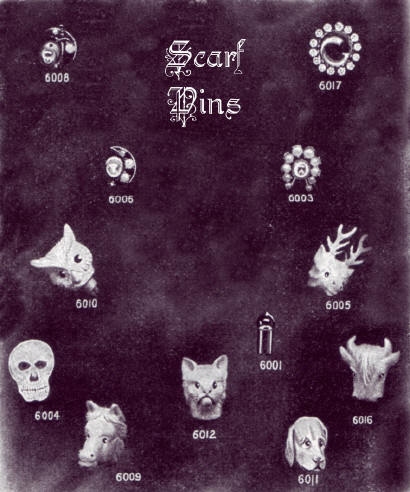 |
| A
hand carved bone stickpin, complete with very small carbon filament
lamp. |
Ever Ready catalog page, showing lighted
scarf pin components |
Another Ever Ready catalog page, illustrating
the wide variety of scarf pins that
were available. |
Hubert's interest in electrical novelties soon piqued
when he began to realize impressive sales from his inventory of electric
scarf pins. As his
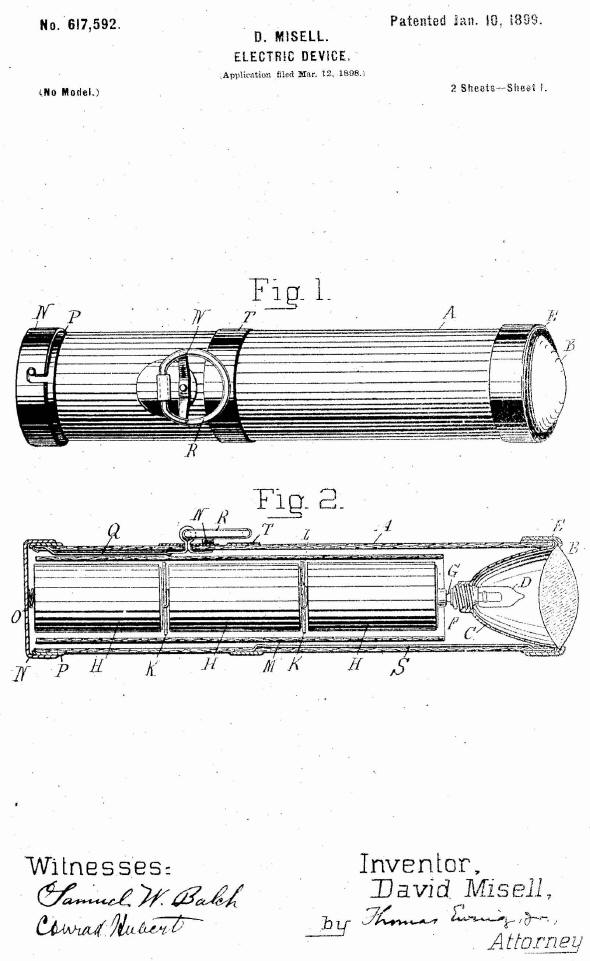 business grew, he purchased a patent for an
electrical bicycle light, and later, the patent for the first tubular
flashlight. Hubert is often credited with the invention of the flashlight,
but that distinction belongs to David Misell, the man from whom he
purchased that patent. Conrad Hubert does, however, get the credit for
first introducing the flashlight to the world. A close look at the
patent for the flashlight pictured to the left reveals that Conrad himself was a
signer-as-witness on the papers. business grew, he purchased a patent for an
electrical bicycle light, and later, the patent for the first tubular
flashlight. Hubert is often credited with the invention of the flashlight,
but that distinction belongs to David Misell, the man from whom he
purchased that patent. Conrad Hubert does, however, get the credit for
first introducing the flashlight to the world. A close look at the
patent for the flashlight pictured to the left reveals that Conrad himself was a
signer-as-witness on the papers.
Hubert founded the American Electrical Novelty and
Manufacturing Company in March of 1898. He was now 42 years old, and
already quite a financial success. He started out making the bicycle
lights and the Flash Light, then spelled with two words. (The device was
called a Flash Light due to the fact that batteries of the time were quite
weak, and carbon filament light bulbs drew a high amount of current. The
weak batteries combined with lamps of a heavy current draw enabled the
device to merely flash light for a few moments before having to let the
battery "rest").
Hubert's brilliant marketing ploy for his Flash Lights
was to offer them to New York City policeman, resulting in high
visibility for the product and a near instant success for him. Soon,
everyone was realizing the value of the flash light, and it was to
be a matter of a few years before he had established a 10,000 square foot
factory on Centre Street in New York City. It was January of 1899. In those
factories, Conrad Hubert and his American Electrical Novelty and
Manufacturing Company made flashlights, batteries and light bulbs under
the name "Ever Ready," and employed 60 men and women.
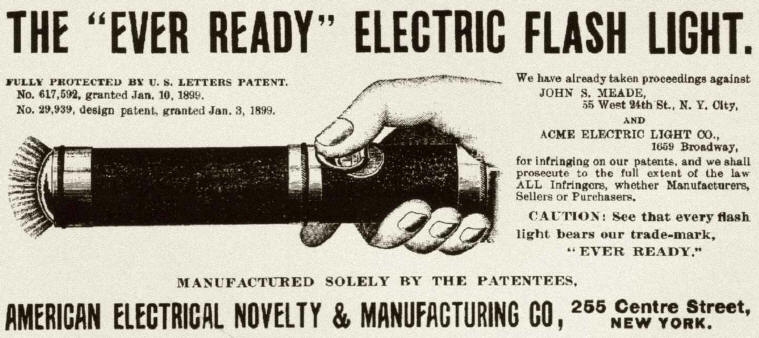
This ad appeared in the January 28,
1899 edition of Electrical Age Magazine. Another version of this ad
states:
"Gives from 6000 to 8000 lights before battery requires renewal."
Welcome Page
TABLE OF CONTENTS
NEXT
|

































